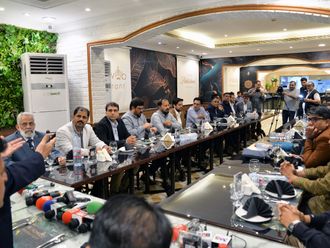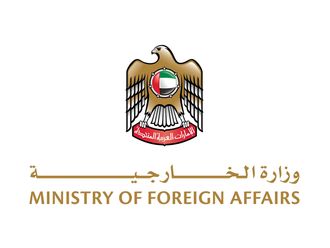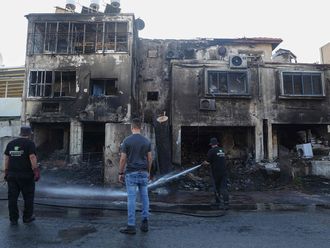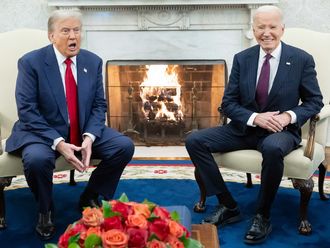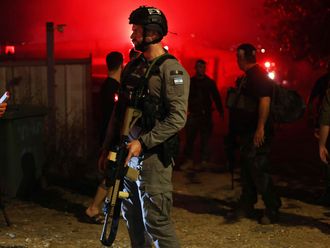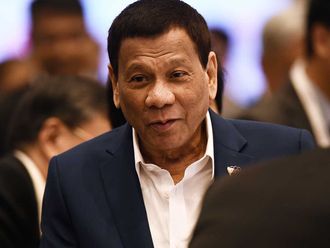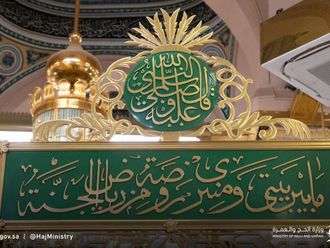Dubai: The contest for the Punjab provincial Assembly’s 297 general seats has traditionally been between the PML-N and the PPP. But this time around, the fight is between the PML-N, spearheaded by Nawaz Sharif with his brother Shahbaz Sharif --who was also the chief minister of the province in the last government -- and the PTI under Imran Khan. Not only is it interesting to see the power dynamics being impacted with the advent of PTI as a third main contender, challenging the traditional power flexing of the PPP and the PML-N, it is also indicative of the progress and maturity of Pakistan’s political scene.
On top of it a larger voter turnout than the 2008 election– analysts predict a 60 per cent turn out—is expected despite the mind numbing spate of terror attacks against the previous government coalition, in the past many weeks leading up to elections.
Punjab being Pakistan’s second largest province covering 205,344 sq km area hosts a population of 72,585,000 with an estimated vote bank of 47,054,149 registered voters.
Security for elections for Punjab involves deployment of 300,000 security officials including 32,000 troops according to the Army spokesperson Major General Asim Bajwa.
Being the most developed and economically progressive province, Punjab is also perceived to be key to power of any political setup. The dichotomy between the centre and Punjab in the last political administration led to continued tensions throughout the five-year term when PML-N parted ways with the PPP government in Islamabad. So given the dynamics this time, there will be minimal problems pertaining resource distribution and allocation of national level development funds in the province, if PML-N manages to form the government at the centre and in Punjab.
The PTI have been perceived as the only major threat to PML-N in their traditional home ground Punjab and especially Lahore where they have spent most of the provincial funds and managed to eek in a transit metro bus system. However, the masses, the younger generation and the educated are seen leaning towards PTI.
A last minute tragedy was avoided on Monday night when Imran Khan fell off an open cargo lift raising him to the platform during an election rally in Lahore. Imran is recovering well from this fall and is out of danger but his impromptu interview with a news channel where he told Pakistani to come out and to avoid swing/bandwagon voting which is know as the baradari (clan) vote in Pakistan may further swing votes in his favour.
Surprisingly, Nawaz Sharif as a gesture of good will and sympathy called for a break in campaigning for a day. While Imran did not go for the Islamabad campaign rally on Thursday –last day for election campaigning before the Saturday polls-- he has taken advantage of the public tide and managed to galvanise the whole of Pakistan.
Switching loyalties for established political figures is also likely to help PTI clinch key constituencies, previously PML-N and PPP strongholds. In Multan for instance, on NA-148 Multan-I, Vice-Chairman PTI Shah Mehmood Qureshi, who previously held the foreign minister’s post in the PPP government before resigning “on principle” when the Raymond Davis incident occurred is standing against former PPP prime minister Yousaf Reza Gilani’s son Ali Musa Gilani.
The unfortunate kidnapping of Gilani’s youngest son and Ali Musa Gilani’s brother, Ali Haider Gilani from a PPP rally on Thursday may have serious implications. Musa Gilani has even threatened not to allow elections in the constituency if his brother’s release was not secured on Thursday evening, prompting a sharp reaction from Qureshi who called upon the Election commission to take notice of such rash threats.
Whereas on NA-151 Multan IV, the PML-N has fielded Sikandar Hayat Bosan against Gilani’s other son Abdul Qadir Gilani contesting on a PPP ticket. The PTI candidate on this seat is Mian Salman Ali Qureshi. On NA: 56: Rawalpindi –V11, an interesting contest is expected between PTI fielding Imran Khan himself against PML-N’s Hanif Abbasi and PPP’s Raja Israr Ahmed Advocate. On another Rawalpindi constituency, NA-52, Rawalpindi III, Chaudhry Nisar of PML-N is pitted against PTI’s Lt Col. (retd) Ajmal Sabir Raja. Chaudhry Nisar is also standing on another Rawalpindi seat, NA-53 against PTI’s Ghulam Sarwar Khan and PPP’s Syed Intikhab Hussain Shah.
On NA-71-Mianwali 1, Imran Khan is contesting PML-N’s Obaidullah Khan Shadikhel and PPP’s Shaukat Pervez Khan. Mianwali is expected to vote for PTI tilting heavily towards Imran Khan because of his ancestral roots. Other traditional power strongholds of influential families in northern, central and southern Punjab are likely to produce similar results with the exception that many key figures having switched parties or contesting independent will bring the same faces to parliament albeit in different political groupings.
Ultimately it is the ballot that will decide the vote that forms the government but the general consensus is that PML-N will retain majority vote in Punjab. Whether PTI manages to come ahead of PPP here will depend on how many seats it manages to gain in the rural constituencies in central and southern Punjab.


